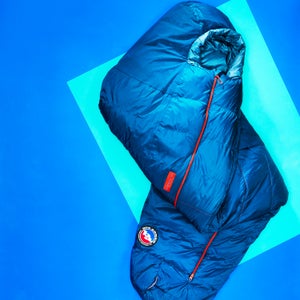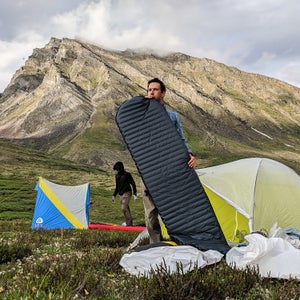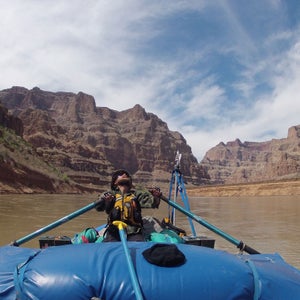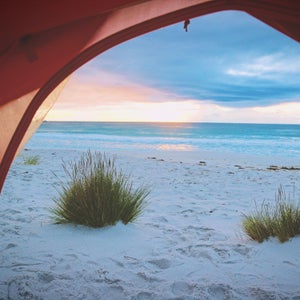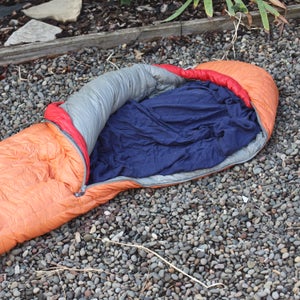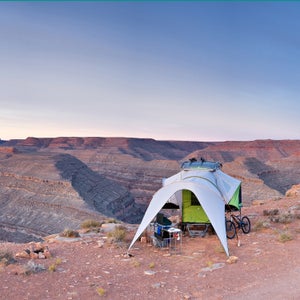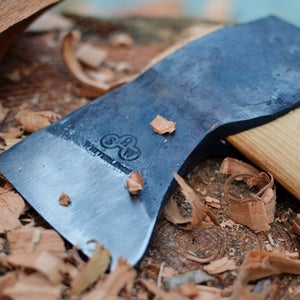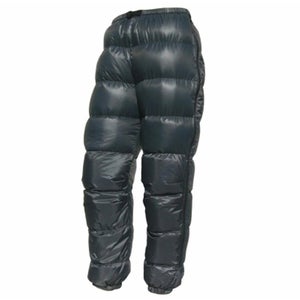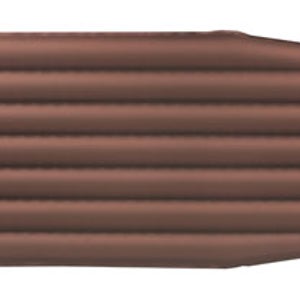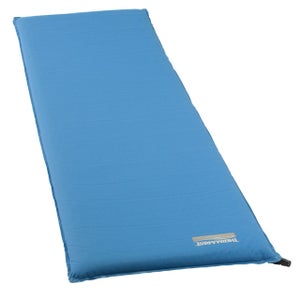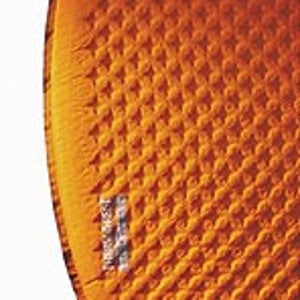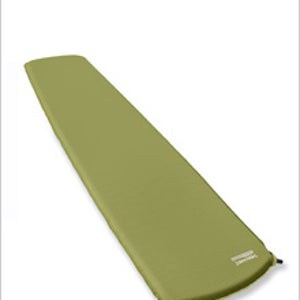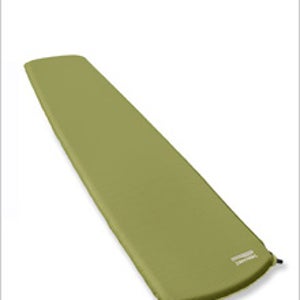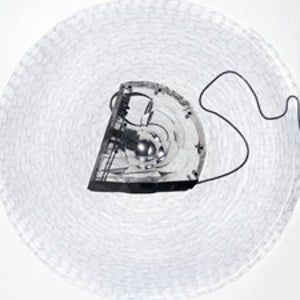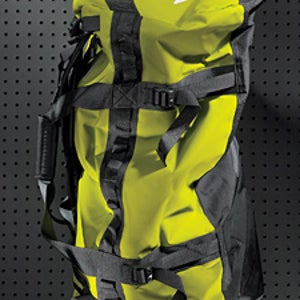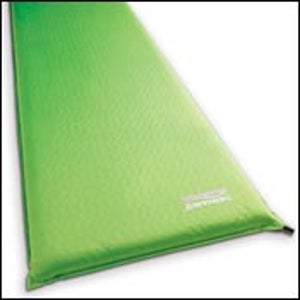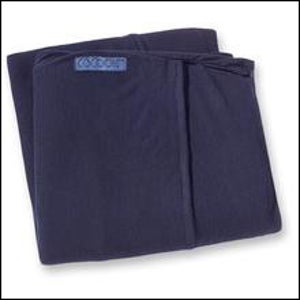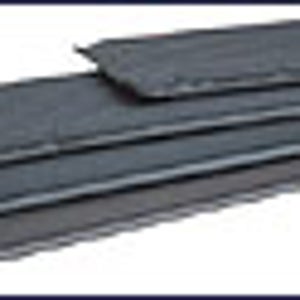Sleeping Bag Accessories
The latest
Archive
Comfortable, technical, light—sleep systems for every season
If you've done everything in your power to salvage it, and it's still not working like it used to, maybe it's time for something new
You're not going to want to do this at home
A new go-to sleeping pad
A reformed raft guide writes a breakup letter to his favorite piece of gear as he upgrades to a (real) mattress
Your choice of sleeping pad will determine whether you sleep well or not
Sack out in something snug, breathable, and packable
We crowdsourced reviews on this crucial piece of gear
Enjoying a night in a tent shouldn’t be a challenge
The simple silk cocoon is a key piece of gear when the temperature starts to drop
Stuff these in your pack and head out of the country with peace of mind
It's a long weekend, perfect for that family wilderness getaway you've been dreaming about.
The roomiest, sturdiest, and most stylish hanging nests of the year
Yes, it's possible to abandon the stakes, poles, and fly. Tuck into these alternatives next time you need some shut-eye outdoors.
From camping expeditions to solo summit attempts, these six items could save your life in the backcountry. At the very least, they’ll make you sleep better at night.
Woolrich’s Civil War blanket was a favorite in the mid-1800s and is still beloved today.
First things first: your pack will be heavier. You’ll be packing more food, fuel, and layers. As for shelter, if you’re not expecting high winds or heavy snowfall, you probably don’t need to upgrade to a four-season tent; a sturdy (read: not ultralight or mostly mesh) three-season model should see you through.
We're going for an epic, cross-country road trip. Weight isn’t an issue, so we're excited to load up on gear that we normally wouldn't have in the backcountry. What are three pieces of gear that you think really make for a great car-camping trip?
Your sleeping bag is only as good as the pad underneath it. We recommend either of these two: the Big Agnes Insulated Q-Core, which employs both horizontal and vertical baffles, resulting in a comfier pad you're less likely to slide off in the middle of the night, or the lighter and warmer Therm-a-Rest NeoAir Xlite.
Spontaneity means traveling light but also being prepared. The gear you bring—bikes, boats, ’biners—depends on where you’re going. The rest? Pack no more than the Big Agnes Insulated Air Core.
Outside reviews the best gear in the 2011 Summer Buyers Guide, including the Therm-a-Rest BaseCamp Mattress.
What type of sleeping pad is best for backpacking, the self-inflating or the tubular kind? Also what's the best, thickest pad out on the market? Rich Sycamore, IL
Some of the world's best outdoor gear is still made right here in the USA.
When Price is No Object
Make your summer bag a cozy nook for two with the 12-ounce Functional Design Bag Doubler.
For alpine jaunts, bring along a ProLite 4 from Therm-a-Rest. The sleeping pad is 20 percent lighter—yet far tougher—than the company’s previous self-inflaters.
The Big Agnes Air Core, with its nylon laminate and seven lengthwise air chambers, looks like an inflatable pool toy and feels as springy as one—it blows up to a cushy 2.5 inches thick—but weighs an astounding 22 ounces and is rated to 35 degrees.
Unfurl the Kelty Silk Sleeping Bag Liner for instant camping luxury. It feels sweet against the skin, lengthens the life of your sack by reducing the frequency of launderings, and lowers your bag’s temperature rating by five degrees. To make extra room in your pack for your pad, liner, or…
The three-ounce Granite Gear Air Compressor ($24 for the small size) can crunch a standard 20- or 30-degree bag practically down to the size of an oatmeal canister.
DURABLE This puncture-resistant self-inflater is reinforced with closed-cell foam on the bottom. It didn’t leak even after we laid it atop a pile of sticks and jumped on it. 20′ x 72′ x 1.5′, 2.5 lbs; thermarest.com…
VERSATILE With nearly three inches of cushion, this sub-two-pound mattress is the choice for ultralight and ultracomfortable. The synthetic fill kept us warm even in the single digits. 20′ x 70′ x 2.8′, 1.8 lbs; orgear.com…
LIGHT Die-cut foam reduces weight and bulk, and raised “berms” along the perimeter, which prevent you from rolling off, make this featherweight feel wider than it is. The minimalist cushion is best for smaller (or tougher) hikers. 20′ x 72′ x 1′, 1.2 lbs; pacoutdoor.com…
Kelty’s queen-size Sleep Well Airbed has a soft top, comes with a six-volt rechargeable pump, and can double as a bed for guests at the house, too. kelty.com…
You can winterize any inflatable sleeping pad with an inexpensive (if bulky) closed-cell foam mat like THERM-A-REST’S Z LITE PAD.
From game-changing new materials (like moisture-wicking cotton) to evolutionary leaps in engineering (like a rotating helmet for extreme crashes), the avant-garde of 21st-century gear has just one thing in common: a total disregard for the status quo.
There's the gear you want, and there's the gear you need. After much internal debate, we present the 25 products every guy should own.
Base camp essentials that take the rough out of roughing it
What's the best full-length, ultra-light sleeping pad? Beth New Canaan, Connecticut
Our esteemed gear editors offer the insight and advice you need to find the right gear for you.
I agree with four of your five "top gear innovations" picks, but would strongly argue that the Therm-a-Rest pad should be in the #2 slot over the humble Ensolite pad. While Ensolite pads were a good step forward, the self-inflating matt has done more to enable a good night's sleep in the backcountry than anything else. Jeremy Omaha, NE
I’m climbing Kilimanjaro this summer. Does it make sense to use a silk liner on the inside of my sleeping bag and a vapor barrier liner on the outside of the bag? Lauren Edmonton, Alberta
We plan to visit friends for a day or two at a time and would like to get sleeping bag liners to use instead of sheets. We also want something to use as a light sleeping bag when our 15 degree bags are too much. Can you compare the silk, cotton, fleece, and synthetic liners on the market? Diane Portland, Oregon
Sustainability meets performance in these eco-friendly products
I’ve had a Therm-a-Rest sleeping pad for a few years now, and I believe it has lost its cushioning. I stored it rolled up in its carry bag. Was that bad? Any recommendations on a new one? Rafael Laredo, Texas
I'm going on a sea kayaking trip in Palau and looking for recommendations on the best sleeping gear. Can you recommend a tropical weight sleeping bag or other solution that provides some cover without too much warmth? John Washington, D.C.
I’m considering buying a bivy to add warmth to and protect my Mountain Hardwear Phantom 32 sleeping bag, which I chose for its light weight. I cp mostly in lean-tos or other minimalist shelters, and when the temp gets down to 35 degrees, I get chilled. I’ve tried liners for warmth and to protect the inside of the bag, but they’re too confining. Any thoughts on the Mountain Hardwear Conduit Bivy? Or do you have other recommendations? Cheryl Melrose, Massachusetts
Is there a tried-and-true product I can apply to my sleeping pad and bivy bag to stop slippage? Just spent a lousy night sliding around on a nylon groundsheet (seldom can I find an off-trail flat spot in the Superstition Wilderness). Tom Arizona
I sleep curled up and cannot find a sleeping pad that's wide enough. Some part of my body ends up hanging off normal pads, and I can feel the heat being sucked away. Two pads don't stay in place overnight. Does anyone make pads that are wide? Eve Nashville, Tennessee
Which is better, an insulated inflatable sleeping pad (such as the Big Agnes Insulated Air Core) or a self-inflating pad? I want to pack light, but I also want something durable and warm enough for three-season camping. Rick St. Louis, Missouri
We do a reasonable amount of winter camping in both Adirondack lean-tos and in tents. Typically I use some combination of an emergency space blanket, a closed-cell pad, and an inflatable Therm-a-Rest pad. A couple years ago I had a hip replacement so padding comfort is a big factor. My question, then: Are the pricier down-filled sleeping pads like those from Exped really that much warmer? Jim Holland Patent, New York
I've been looking at some Big Agnes sleeping bags and interested in adding one of their REM sleep pads. Seems like a great idea (the pad inserts into a sleeve in the base of the bag), but I was wondering if this would be a mistake because the sleeping bag sacrifices insulation on its base. Should I go for the "system," or just drop for standalone sleeping bag and sleeping pad? Brad Durango, Colorado


